This post may contain affiliate links.
Ever since I posted my Tuna Salad with Sauerkraut recipe on social media, everyone has been begging for my homemade sauerkraut, so here it is!
Sauerkraut is a fantastic choice for those interested in at-home fermentation because it’s one of the simplest recipes out there. All you need is some cabbage, salt, and a little bit of science, but once you get the hang of it, it opens the door to all sorts of fun fermented things like pickles or even kimchi!
Before we dive into the recipe, let’s talk about the science behind sauerkraut:
Lactobacillus bacteria are considered “friendly” bacteria, are not harmful to humans and are present everywhere, including on our skin, in our bodies, and on the produce we consume. This bacteria has two critical qualities: it can survive in oxygen-free environments, and it can tolerate salt better than other microorganisms.
To ferment vegetables, such as cabbage, we take advantage of these two qualities – it’s our golden ticket to fermentation! First, we add enough salt to make it difficult for competing microorganisms to survive. The salt then draws moisture out of the cabbage’s cells through osmosis, forming a salty brine. This brine is important because it submerges the cabbage and deprives the Lactobacillus and other microorganisms of oxygen – the second step! Lactobacillus then kicks into something called Anaerobic (Oxygen-Free) Fermentation Mode, converting the cabbage’s sugars into lactic acid while creating by-products like carbon dioxide (this is what makes our fermented products bubble and burp).
The main enemy here is oxygen, which is why it’s crucial to keep the cabbage submerged in the brine throughout the entire fermentation process. As long as you remember to check it regularly, you’ll be fine! I also recommend tasting it along the way.
An important note: sometimes molds can form on the surface of the brine, especially in the early stages before the cabbage has fully acidified. Mold on the surface is not ideal, but it doesn’t mean your kraut needs to be thrown away. Just carefully remove the mold and continue with the recipe as usual.
So, who’s making this?
Table of Contents
Watch Me Make My The Simplest Two-Ingredient Homemade Sauerkraut
If you’re in need of some more homemade staples, be sure to follow me on Facebook, or see all of my better basics (and so many other delicious recipes!) over on Pinterest.
How To Make My The Simplest Two-Ingredient Homemade Sauerkraut

Step 1. Trim, core, and shred the cabbage using a mandoline or very sharp knife. Reserve the outer leaves for fermenting.
Step 2. If using a large fermentation crock, add shredded cabbage to crock, sprinkling in the measured salt and optional spices as you go. If using a Mason jar, put shredded cabbage in a large mixing bowl and sprinkle with measured salt and optional spices. Mix well, then knead and squeeze cabbage for a few minutes to begin to release its liquid.
Step 3. Covering cabbage with the lid between squeezes, continue to squeeze and knead cabbage roughly every 15 minutes for up to 4 hours, until lots of brine has formed and it covers the cabbage when it’s pressed down. If you don’t have enough brine, see my note at the end of the recipe for how to make more brine and simply top up the container with that.
Step 4. Lay reserved cabbage leaves on top of cabbage and press down until brine rises 1/2 to 1 inch above cabbage. Add stone or glass weights and push down to compress even more.
Step 5. Seal fermentation Crock or Mason Jar with airlock lid following manufacturer’s instructions. Put in a cool, dark place; 65 to 70°F is ideal.
Step 6. After a day or two (or three), the fermentation process should kick off more actively and the cabbage should be bubbling away.
Step 7. After the first week, feel free to open the vessel, push cabbage back down below brine level. It’s very important that the cabbage remains submerged in liquid. Don’t forget to taste the cabbage to see how it’s going!
Step 8. The sauerkraut is ready when, well, it tastes like sauerkraut! I usually refrigerate mine at 2-3 weeks. If a tiny bit of mold has formed, it’s usually okay, you can scoop it out and discard. Refrigerate in a sealed container for up to 6 months.
Step 9. Enjoy!
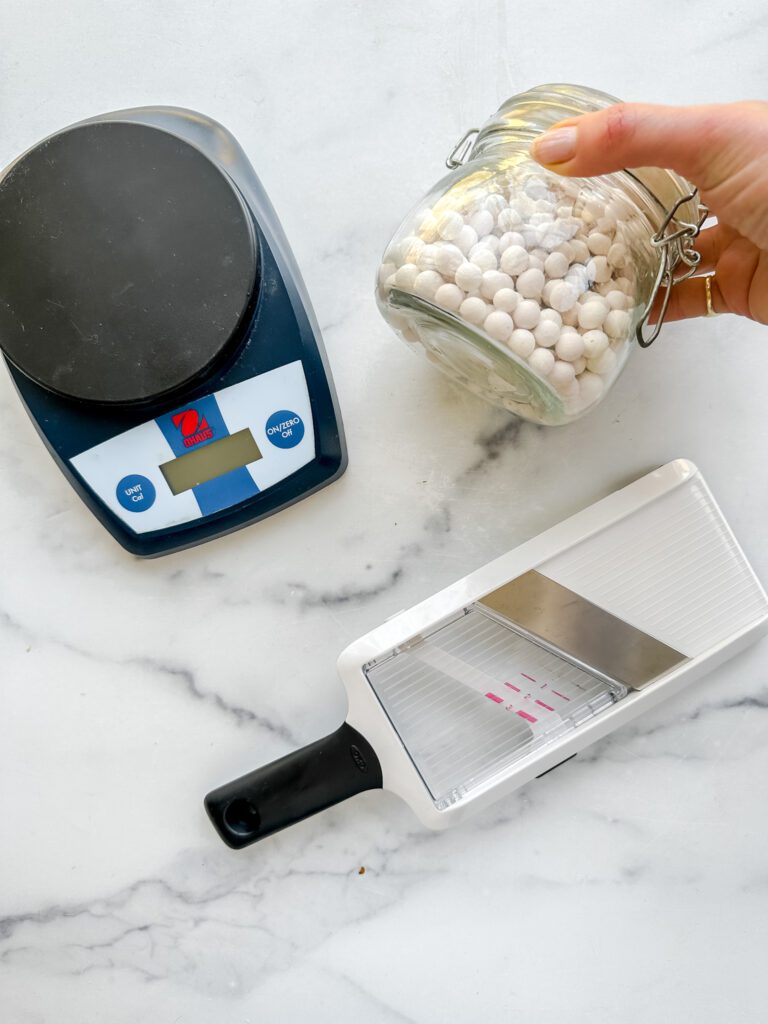
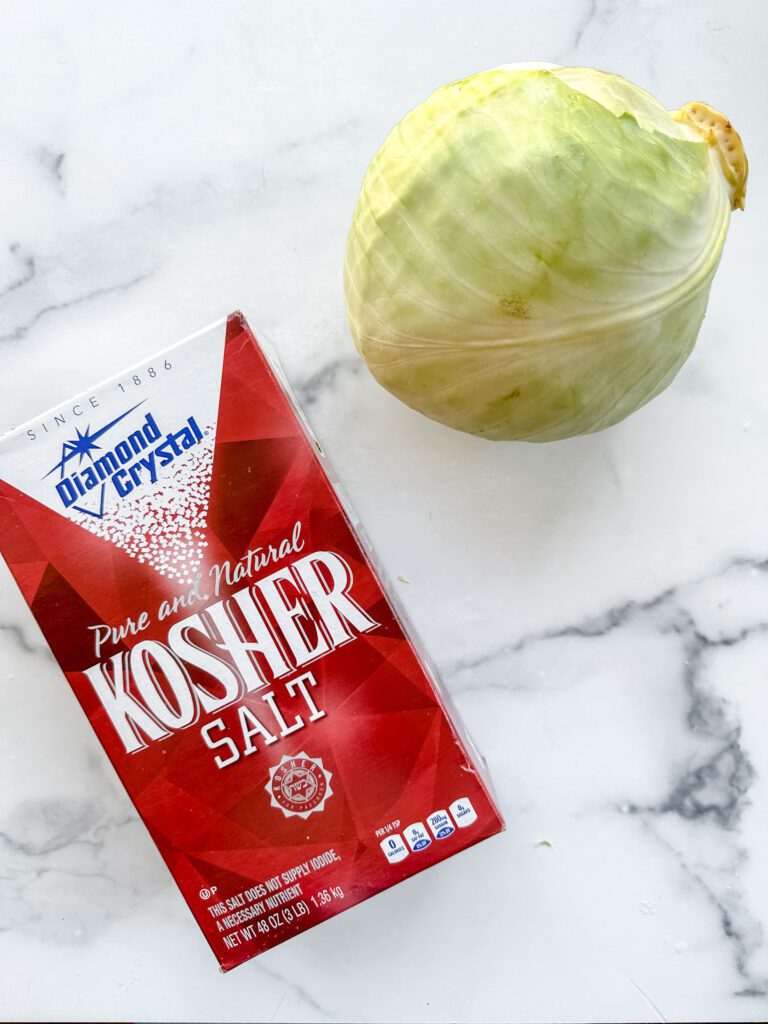
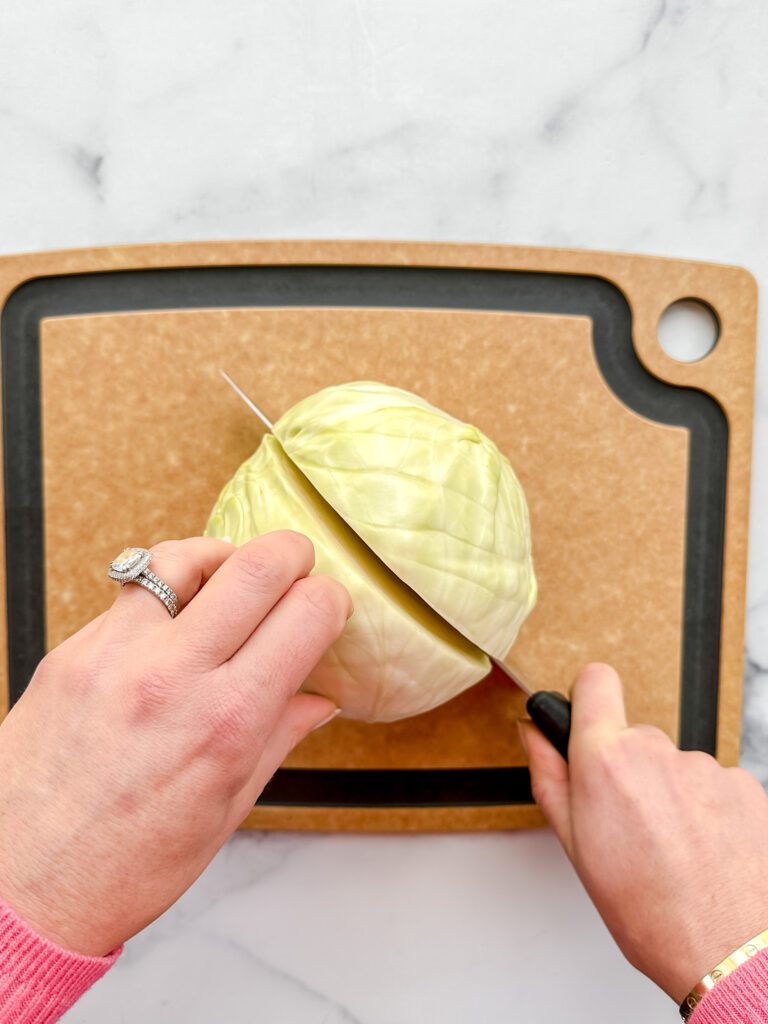
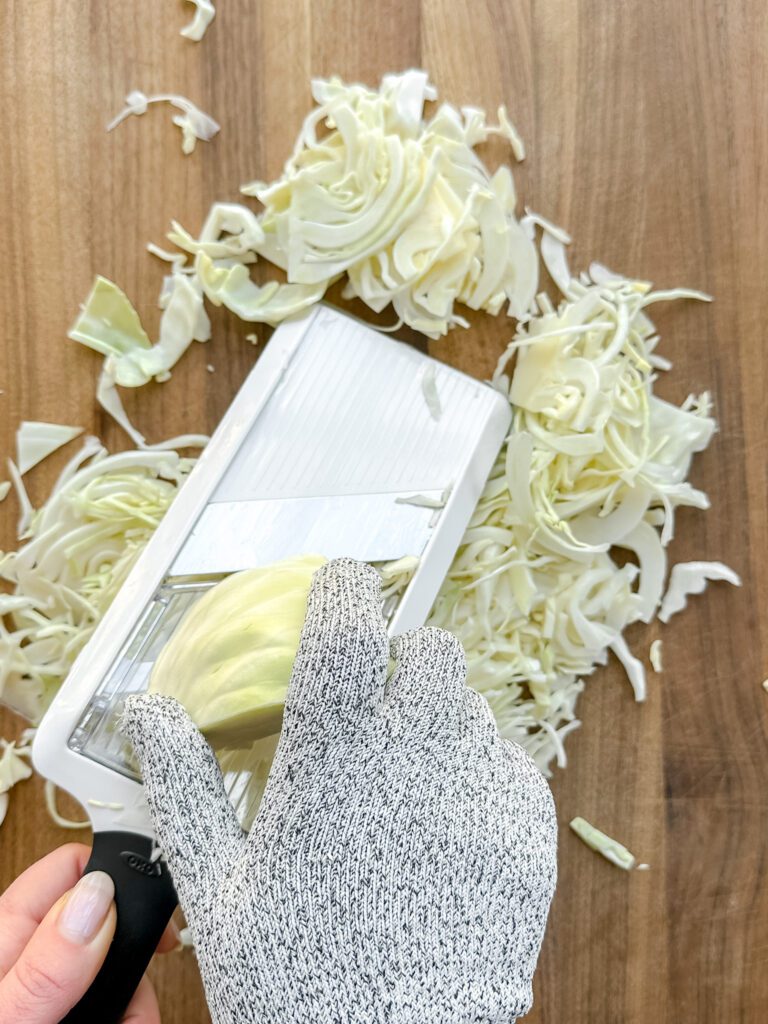
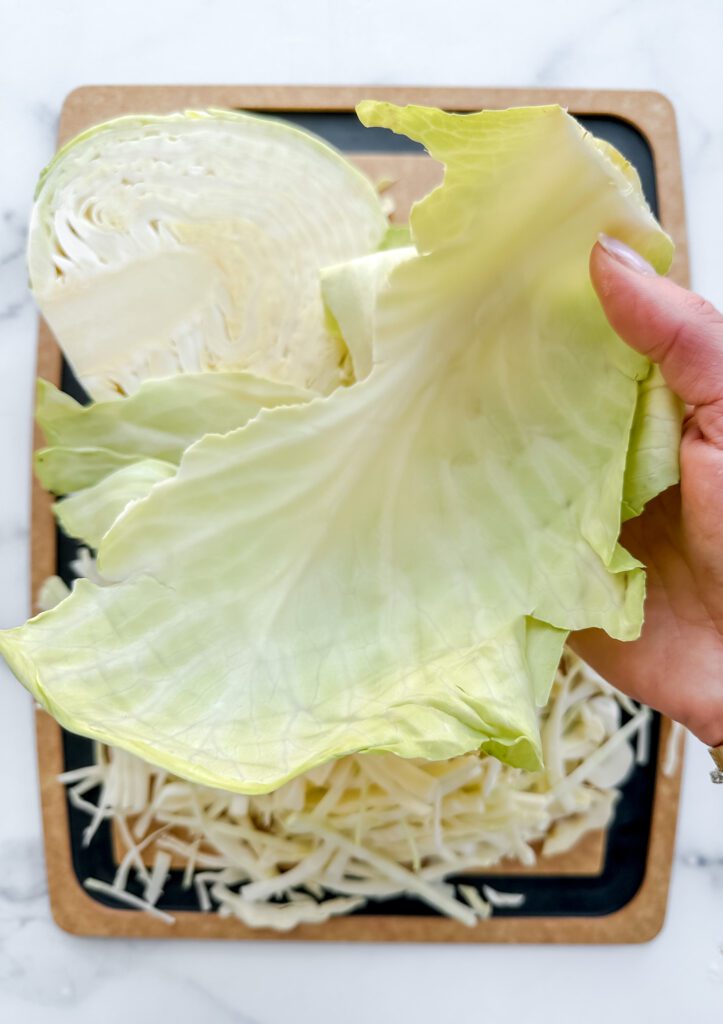
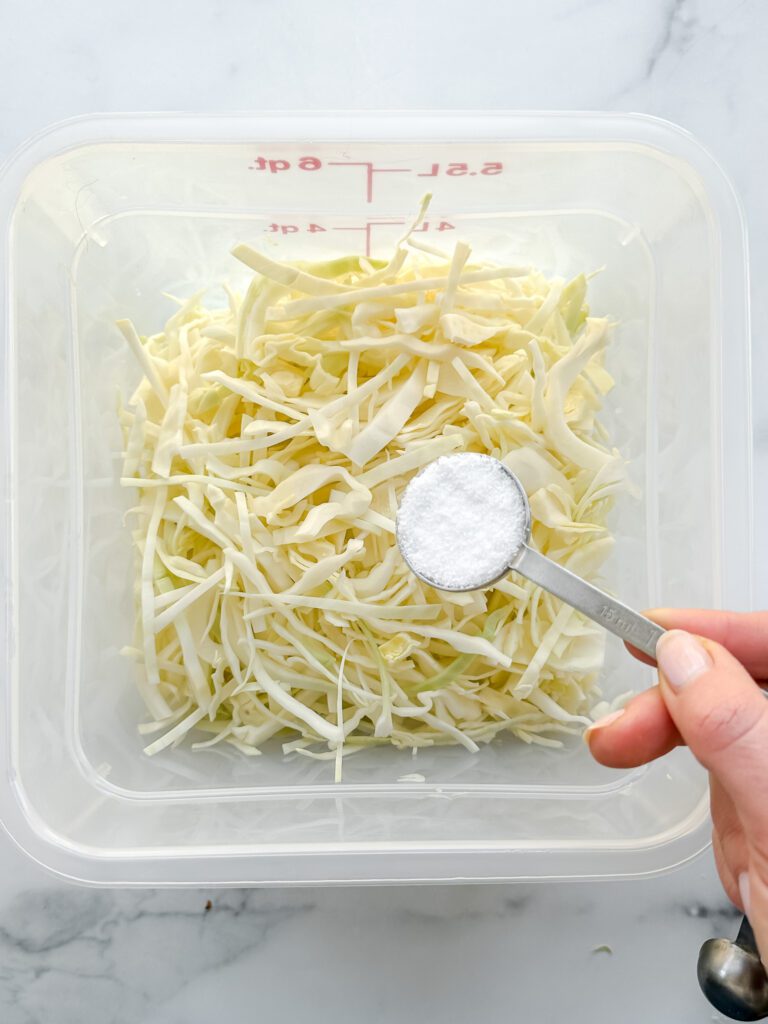
What Else Can I Use?
- This is the most basic recipe, feel free to add caraway seeds, juniper berries, or garlic to flavor your sauerkraut once you get the hang of it
- You can use purple cabbage for a more German style of sauerkraut
- Diamond Kosher salt is what I use here, which is less salty than Morton’s. If you’re using something other than Diamond, weigh the salt as directed rather than going by the tablespoon amount.
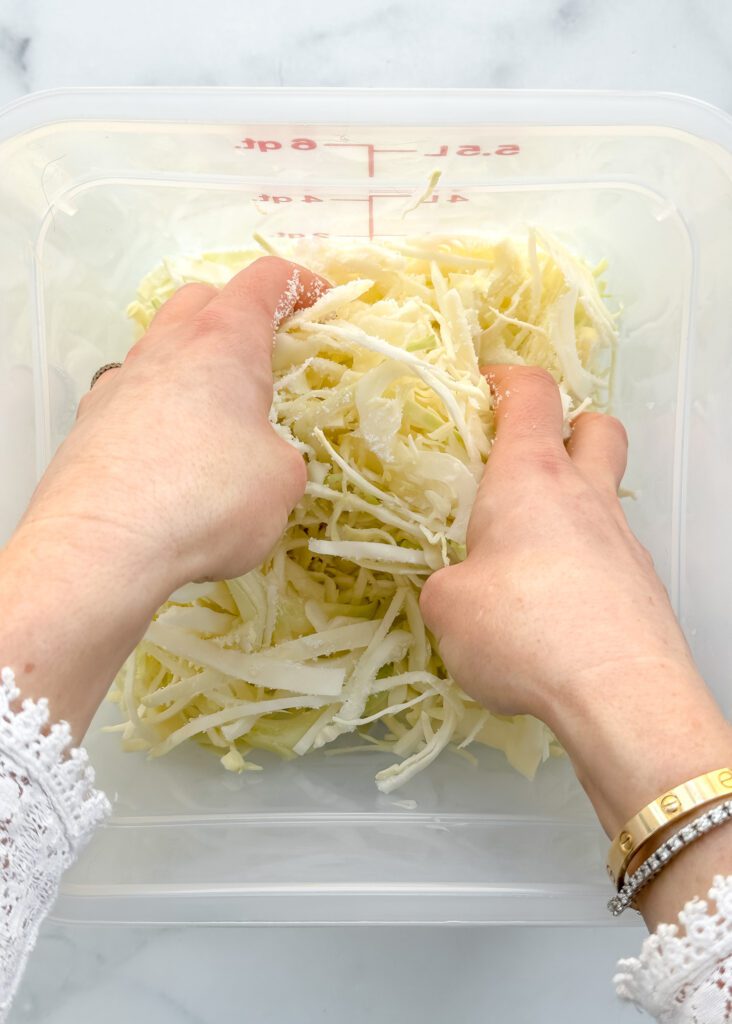
This The Simplest Two-Ingredient Homemade Sauerkraut is special because:
It’s two ingredients, it literally could not get easier than this
It keeps for 6 months in the fridge!
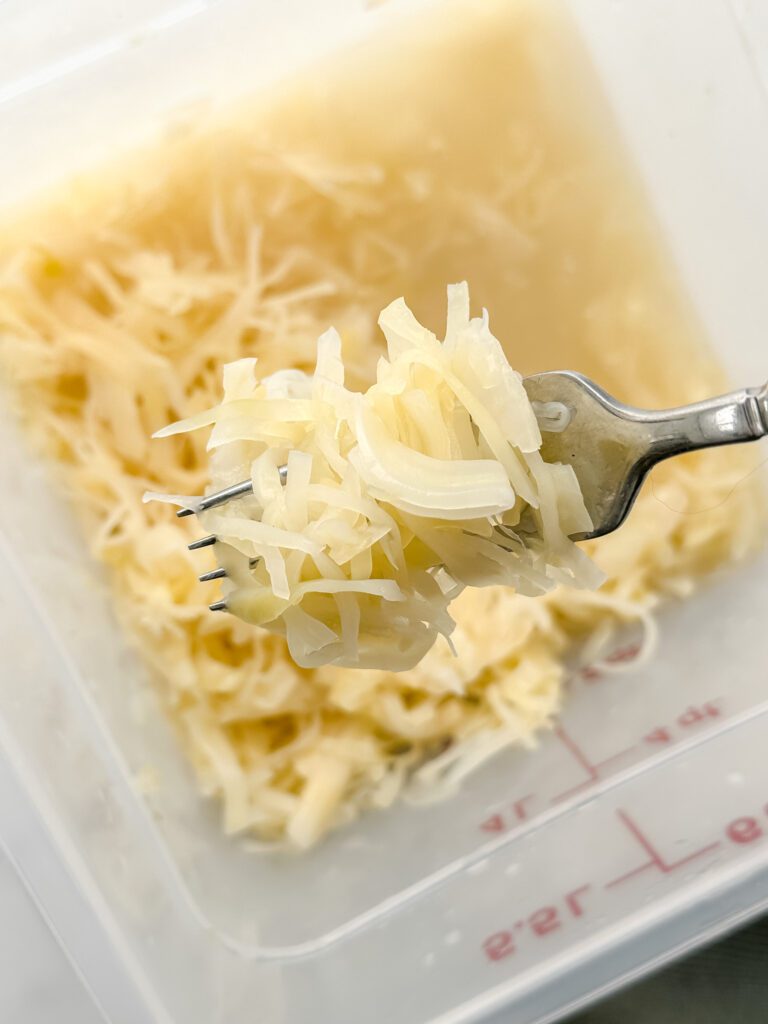
More Homemade Condiments
Make-Ahead Gravy (Gluten Free)
White Bean Blender Hummus Dip (Vegan, Gluten Free, Dairy Free)
If you make my Two-Ingredient Homemade Sauerkraut, and I hope you do, please leave me a comment here and rate the recipe. Your feedback means a lot to me! You can also post to Instagram and tag me so I can share your creations!
If you like full recipe videos, you’ll want to follow me on Facebook and Youtube as I publish new videos daily!
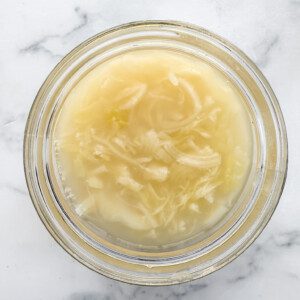
The Simplest Two-Ingredient Homemade Sauerkraut
Ingredients
- 1 small head of green cabbage, About 3 pounds
- 3 tablespoons of Diamond Crystal kosher salt, If using other brands, measure 2% of the cabbage’s weight and use that amount of salt
Instructions
- Trim, core, and shred the cabbage using a mandoline or very sharp knife. The thinner the shreds, the easier it will be to pull moisture out which we will be doing. Reserve the outer leaves for fermenting.
- If using a large fermentation crock, add shredded cabbage to crock, sprinkling in the measured salt and optional spices as you go. If using a Mason jar, put shredded cabbage in a large mixing bowl and sprinkle with measured salt and optional spices. Mix well, then knead and squeeze cabbage for a few minutes to begin to release its liquid.
- Covering cabbage with the lid between squeezes, continue to squeeze and knead cabbage roughly every 15 minutes for up to 4 hours, until lots of brine has formed and it covers the cabbage when it’s pressed down.
- Lay reserved cabbage leaves on top of cabbage and press down until brine rises 1/2 to 1 inch above cabbage. Add stone or glass weights and push down to compress even more. If you still don’t have enough brine, I've added instructions below to help you make more.
- Seal fermentation Crock or Mason Jar with airlock lid following manufacturer's instructions. Put in a cool, dark place; 65 to 70°F is ideal.
- After a day or two (or three), the fermentation process should kick off more actively and the cabbage should be bubbling away. If the Crock/Mason Jar is quite full, put a rimmed baking tray under it to catch any overflowing liquid.
- After the first week, feel free to open the vessel, push cabbage back down below brine level – it's very important that the cabbage remains submerged in liquid. Taste the cabbage to see how it’s going.
- The sauerkraut is ready when, well, it tastes like sauerkraut! I usually refrigerate mine at 2-3 weeks. If a tiny bit of mold has formed, it’s usually okay, you can scoop it out and discard. Refrigerate in a sealed container for up to 6 months.
Make Additional Brine:
- Dissolve 2 grams of salt in 100 grams of water; 1 cup of water would require about 1 heaping teaspoon of Diamond Crystal kosher salt.
Nutrition information is automatically calculated, so should only be used as an approximation.



Leave a comment